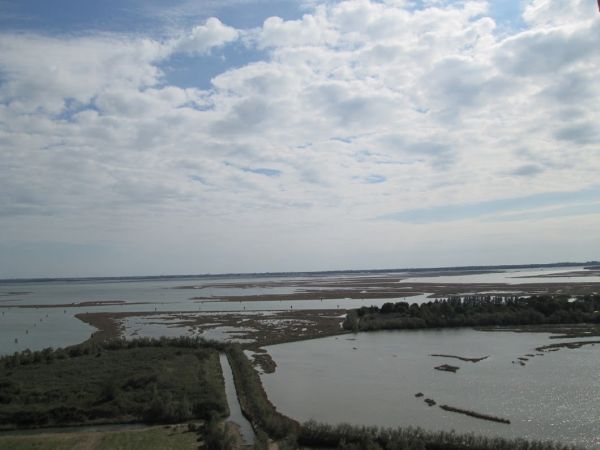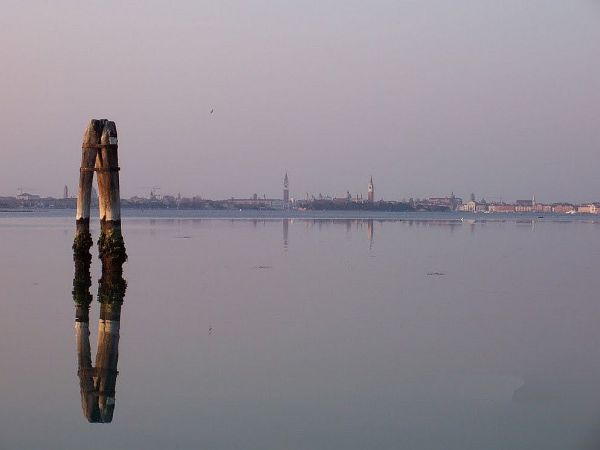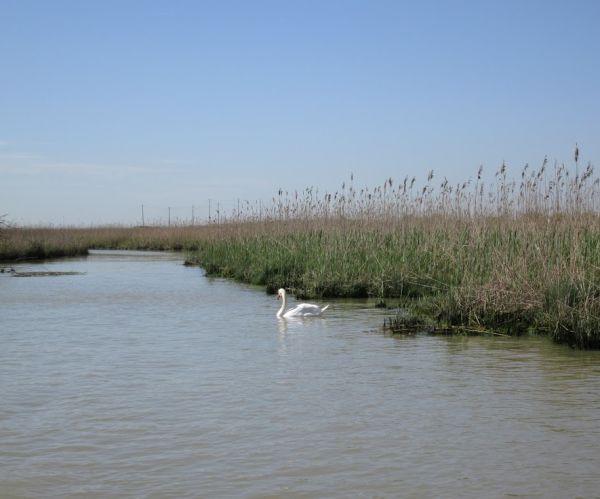
It’s not that I want to talk about MOSE any more than I want to gnaw off a hangnail, but it’s not my fault if wondrous developments continue to pop up in the endless saga of this undertaking. And even if you are not a connoisseur of wondrousness (wondrosity?) in bloated public works, there may be a few people left who still are interested in how this thing is getting along. By which I mean those people who used to ask me about it with such eagerness and curiosity and goodwill and hopefulness, seeing that until just a few years ago the Destiny of Venice was trumpeted by the press to be hand- and leg-cuffed to the success or failure of this … thing.
One recalls that the most recent date projected for finishing its construction (and beginning the TWO-YEAR TESTING) was the end of 2018. But brace yourselves: It’s going to be later. They say that the conclusion will be January 1, 2019. Or when the cassowaries return to Capistrano. Or when Jesus comes back. Everything depends on everything else, which is a fancy way of saying “money.”

Here is a rundown of the situation as outlined by Roberto Linetti (Interregional Superintendent of Public Works) to the city councilors a few days ago:
The job needs more money. (I can’t comment on that anymore; it’s like saying the sun needs to come up tomorrow.) It needs 221 million euros — as do we all — to finance the completion of 60 remaining aspects of the project, 40 of which must be finished this year. Only 40 million euros have been released from the total allotment so far, and the rapport between work done and payments made is not encouraging.
“The construction sites are not going well,” Mr. Linetti admitted. Everything is slowing down because the private companies have slowed down, which they’ve done because of the financial and legal Gordianosities of the Consorzio Venezia Nuova, the former governing consortium, and its collapse under the weight of its financial skulduggery. The companies have slowed down on working because payments due them are arriving even more slowly. “If the private companies aren’t motivated to go ahead,” said Linetti, “it’s hard to make them go ahead, even by kicking them.”
But every day that the construction is stalled, the underwater parts are deteriorating, which will only require more expenditure down the line. It’s a situation that brings to mind the notion that “We can’t stop fighting because otherwise our boys would have died for nothing.”
The MOSE annual budget also earmarks 15 million euros for caring for the lagoon (in unspecified ways). Considering how much damage to the lagoon the whole project is causing, that seems fair. Sort of. Nice they remember there is a lagoon.

Projected cost of administration and maintenance. This is a big one, which few people paid much attention to in the giddy days of selling contracts and all.
“We think that the administration of MOSE will cost about 80 million euros a year,” Linetti told the city councilors. “And that’s not much for a work of this importance and complexity in an area like Venice, considering that between 20-30 million are solely the cost of the utilities for the system’s functioning. Between 15-20 million euros a year will be for personnel, at least 100 of them. Then there are 30-40 million for the maintenance itself,” including the undefined work in the lagoon. Let me repeat that: The maintenance work itself will cost 30-40 million euros a year. “The State surely won’t fail to maintain its support.”
The maintenance work will be undertaken in the Arsenal, where the gates will periodically be brought to be cleaned, stripped and revarnished. Naturally a new hangar will have to be constructed for this work, which will cost 18 million. There are more zero’s swarming around the MOSE accounts than there are mosquitoes on Sant’ Erasmo at sunset in July.

And the use of the gates? The news is now that to protect Venice from exceptional high tide, it will probably be necessary to raise only the gates at the inlet at San Nicolo on the Lido, leaving the gates at Malamocco and Chioggia peacefully reposing underwater.
“The experts have verified,” said Linetti, “that closing only the inlet at the Lido will result in a significant lowering of the level of the tide in the historic center, without the necessity of closing the entire system.” So all that work and expense to build gates at all three inlets was…….pointless?
In fact, knowing that the Lido gates would be used the most frequently was the reason, according to Linetti, why more “materials” were dedicated to the construction there. And therefore, he says, “There will be a saving on the costs of maintenance.”
He has now totally lost me. Where do these savings on maintenance come from? On the gates that will be used more often (theoretically), or those which therefore will be used less? I could take high-powered binoculars and I still don’t see savings anywhere. At this point I’m not even sure what savings look like.

(I am indebted to the excellent reporting of Enrico Tantucci in La Nuova Venezia of 10 January 2018.)

1 Comment
As we say in Tucson: Oy Veh Maria!
Silver medal on a purple ribbon to you for the best coinage of the year: Gordianosities